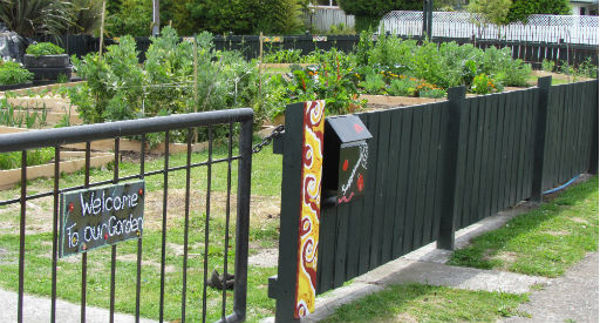
It's no mystery that growing your own food is far more satisfying than buying it. And that's not just because it's easier on the wallet, it's also because it's fresher, tastier and better for you.
Community gardens have long been a part of society; they provide a mechanism for communities to come together, work together and grow together. In recent years with smaller sections, busier lifestyles, rising food prices and the need to be more connected to your community, there has been a resurgence and development in community gardens all over the country.
Benefits
A major benefit associated with being part of a community garden is that they provide access to fresh, often organic homegrown fruits and vegetables. They are wonderful places to learn about gardening, sowing seeds, taking cuttings, making compost, the environment, recycling and water use. The activities encourage physical activity, provide emotional support and a sense of worth. Experienced gardeners follow sustainable and organic gardening practices, making it a great way to learn these skills to take home to your own garden.
Crops
Whilst the crops grown at each community garden will vary, most will grow vegetables all year round, berries in spring and summer and a range of fruit trees. Heirloom and vintage crops are popular and some community gardens offer a seed saving service. Flowers are planted to attract bees and to beautify the site.
Types of Community Gardens
Every community garden has its own unique culture based on where it's located, the community it supports and the people involved. There are two main types of community gardens - shared gardens and allotment gardens. Most are shared gardens, where people collectively grow, harvest and share all the crops. The second type is allotment gardens, where people are allocated individual plots which they manage and upkeep. Some community gardens are a combination of the two.
Some have stringent rules and philosophies whereas other are quite fluid. Some are 'gated' and only open certain hours, others have no boundary to enter. Some have an open harvest policy, where anything can be harvested at any times, whereas others are the opposite and harvesting is managed by certain members of the community. A generic harvest rule seems to be 'never harvest more than you can eat'.
Many community gardens are started on bare, vacant or wasteland areas. The beautification of these areas creates a vibrant and engaging environment where nature and wildlife harmonise as one.
How to find a community garden and get involved:
- Contact the local council and ask for a list of community gardens and the contact person.
- Ask at yoru local garden centre or garden club.
- Seach 'community gardens' online.
Get involved and see why community gardens are growing in popularity. Community gardens are usually funded through memberships, donations and grants. Some gardens sell excess crops to fund the costs associated with the gardens, others rely on the support of local businesses and organisations.
If you can help in any way get in touch with your local community garden!
By Rachel Vogan
Post a comment
Community Spirit - Community Gardens Comments
I am a member of the Tokoroa Community Garden and our garden is very large. We grow all types of veges and flowers and sell the freshly harvested things to raise money which we then distribute back to the Tokoroa community-St John Ambulance, Womens Refuge and the like. A small team of volunteers run this garden and it is a great success in many ways
Mary Stevenson
Hi Mary, That's great to hear, Community Gardens are a wonderful idea the whole community can benefit from! Jenna (Tui Team)
jenna
Please help me fund my spiritual tauranga based garden
marion t
Hi Marion, thank you for your comment. Please email your information and contact details to info@tuigarden.co.nz. Thanks Jenna (Tui Team)
jenna